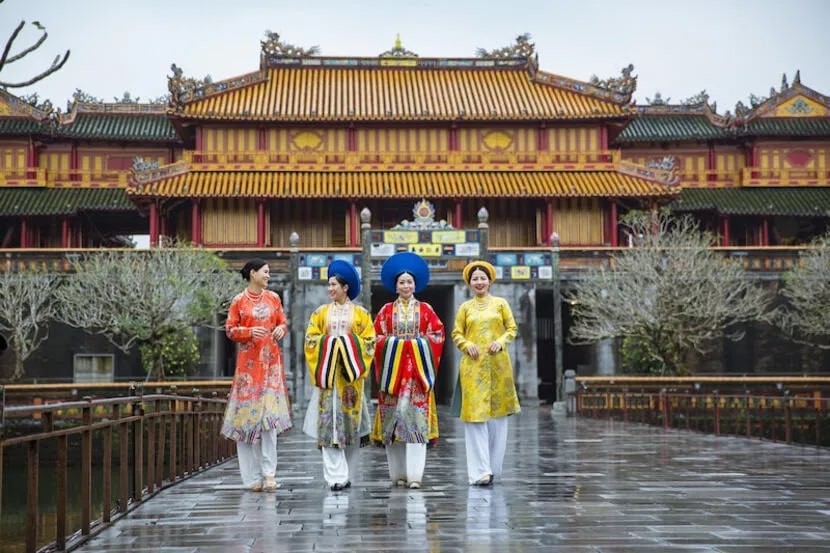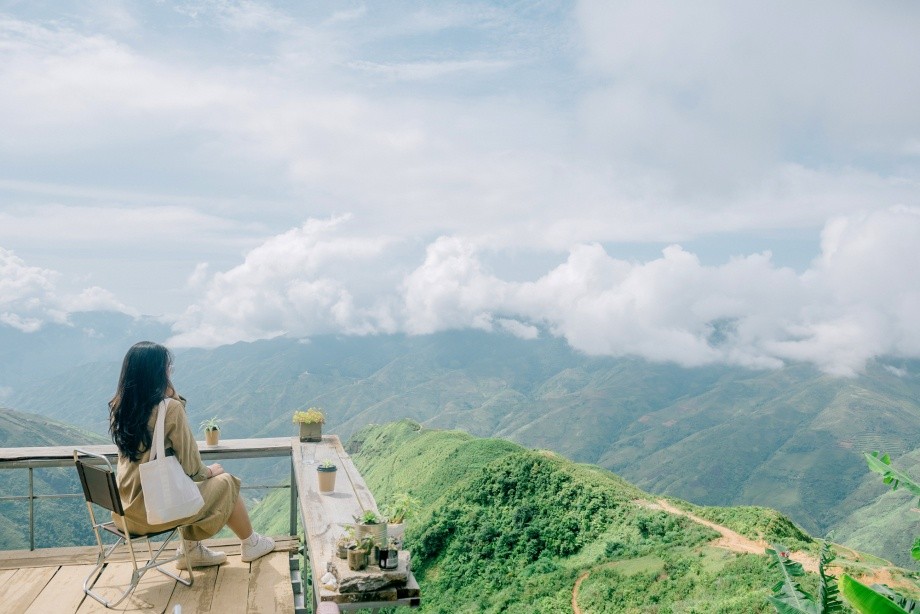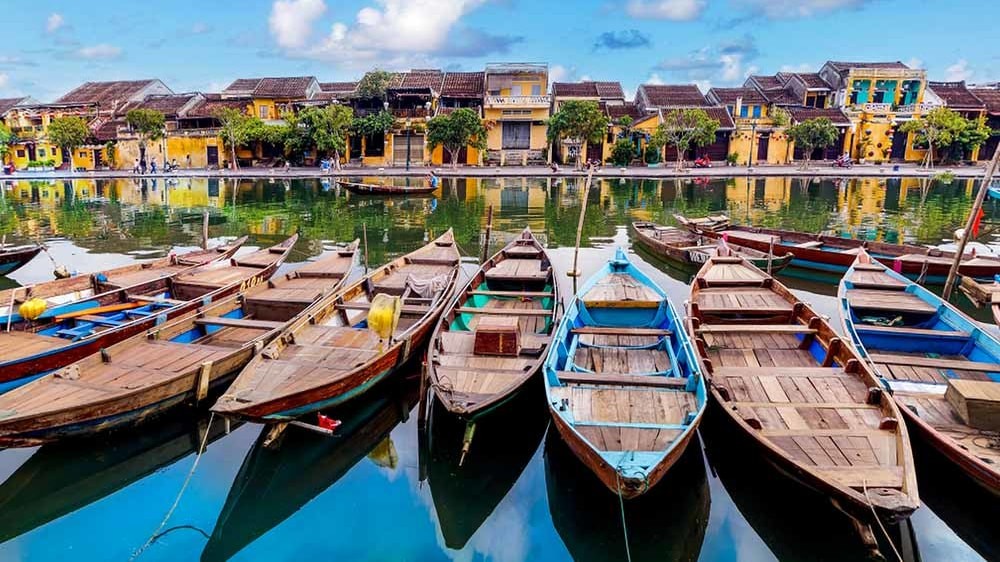10 Palaces With The Most Beautiful Structures In The World
Magic lies within the lavish halls and verdant labyrinths of palaces. A simple glance at a royal dwelling’s dreamy interiors or sky-high towers transports travelers in time to when kings and queens strolled through the bountiful courtyards and members of court met in the ornately decorated chambers.
Here is top 10 palaces with the most beautiful structures in the world.
1. Potala Palace
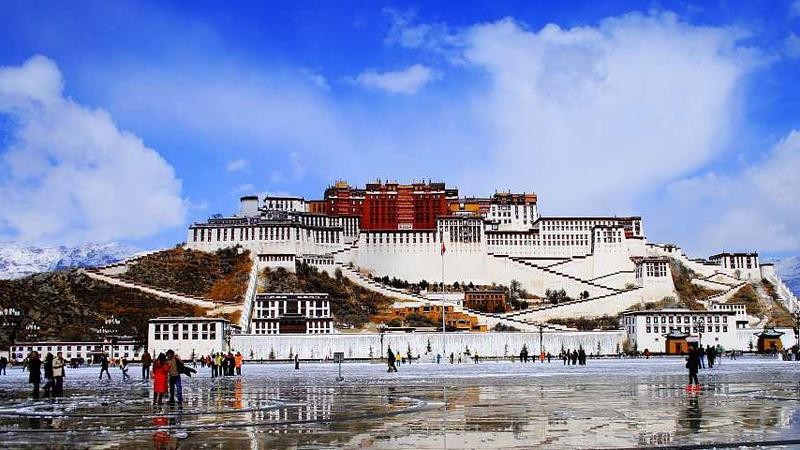 |
| Photo: China Daily |
At 12,139 feet above sea level, Potala is the highest palace in the world. The 1,300-year-old structure was originally built as a gesture of love, commissioned by Tibetan king Songtsen Gambo for his marriage to Princess Wencheng of the Chinese Tang Dynasty. Eventually monks came to rule Tibet and the palace was expanded and converted into the winter residence for the Dalai Lama. But when the Dalai Lama was exiled to India in 1959, the Chinese government took over and made the grounds into a museum.
Still, the Potala Palace remains an iconic part of the region and a mecca for Buddhists around the world. The name Potala is a nod to a sacred mountain in India, where the Buddha of compassion is said to dwell. Year-round, thousands of religious pilgrims circle the perimeter of the palace with prayer wheels and beads to ask for blessing. Many have traveled thousands of miles by foot just to pay their respects.
The Potala Palace was named a World Heritage site in 1994 by UNESCO, and the neighboring Jokhang Temple and Norbulingka and were added on as extensions in 2000 and 2001, respectively. The Jokhang Temple is considered the most sacred temple in Tibet and the Norbulingka was the former summer residence of the Dalai Lama. All three structures are outstanding embodiments of Tibetan culture and despite waves of natural and human-induced damage, they are international icons that have remained spiritually relevant and intact over the centuries.
2. Grand Palace
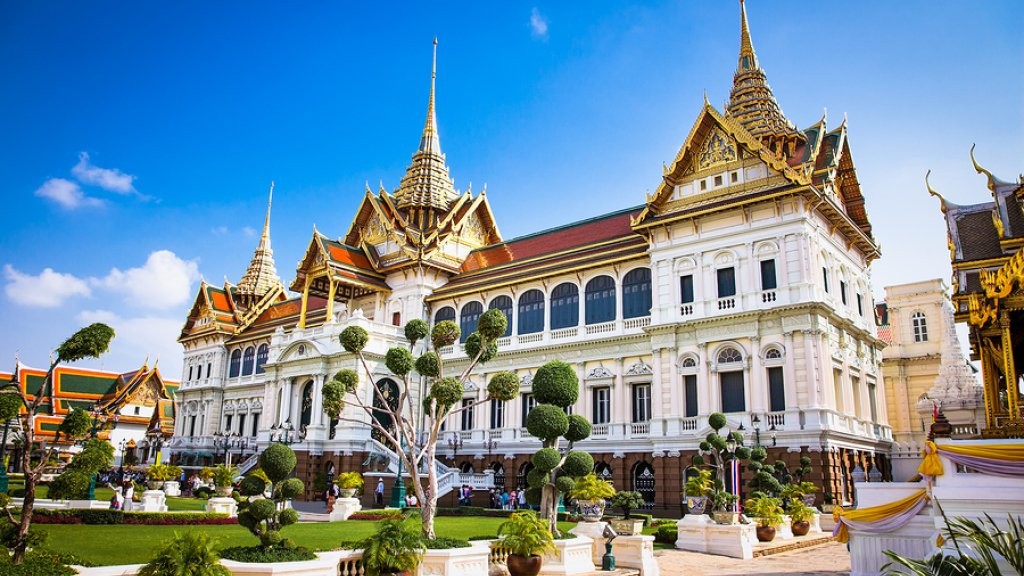 |
| Photo: TravelOnline |
No visit to Bangkok would be complete without a visit to the dazzling Grand Palace. This spectacular structure is one of the most famous landmarks in the city and is open daily to visitors. Located in the heart of Bangkok, the Grand Palace is in fact a complex of buildings and has been the King of Siam’s official residence since it was built in 1782. It’s also been the home of the Thai King, Royal Court and the administrative seat of government for more than 150 years.
Open daily from 8.30am to 3.30pm, the Grand Palace is a popular attraction located in Old City and costs 500 baht (approximately AU$20) which includes entry into the Grand Palace as well as Abhisek Dusit Throne Hall and Vimanmek Palace. It’s the intricate detail and impeccable architecture of this grand old dame that makes the Grand Palace so special. The awe-inspiring beauty is a tribute to the craftsmanship and creativity of the Thai people.
The Grand Palace Bangkok is considered the spiritual heart of the Kingdom of Thailand and the palace complex features a number of impressive buildings including the Temple of the Emerald Buddha (Wat Phra Kaew) which houses the small but famous and widely revered Emerald Buddha dating back to the 14th century. Considered Thailand’s most important Buddhist temple, Wat Phra Kaew enshrines the meticulously carved jade Buddha in the Lanna school meditating position.
Despite their proximity to each other, visitors will notice some distinct contrasts in the style of both the Grand Palace and Temple of the Emerald Buddha. The Temple is very Thai in style while the Grand Palace is much more European inspired. The impressive interior of the Palace is still used for important ceremonies such as coronations and also features the antique throne which was used prior to the Western one currently in use.
3. Qasr Al Watan palace
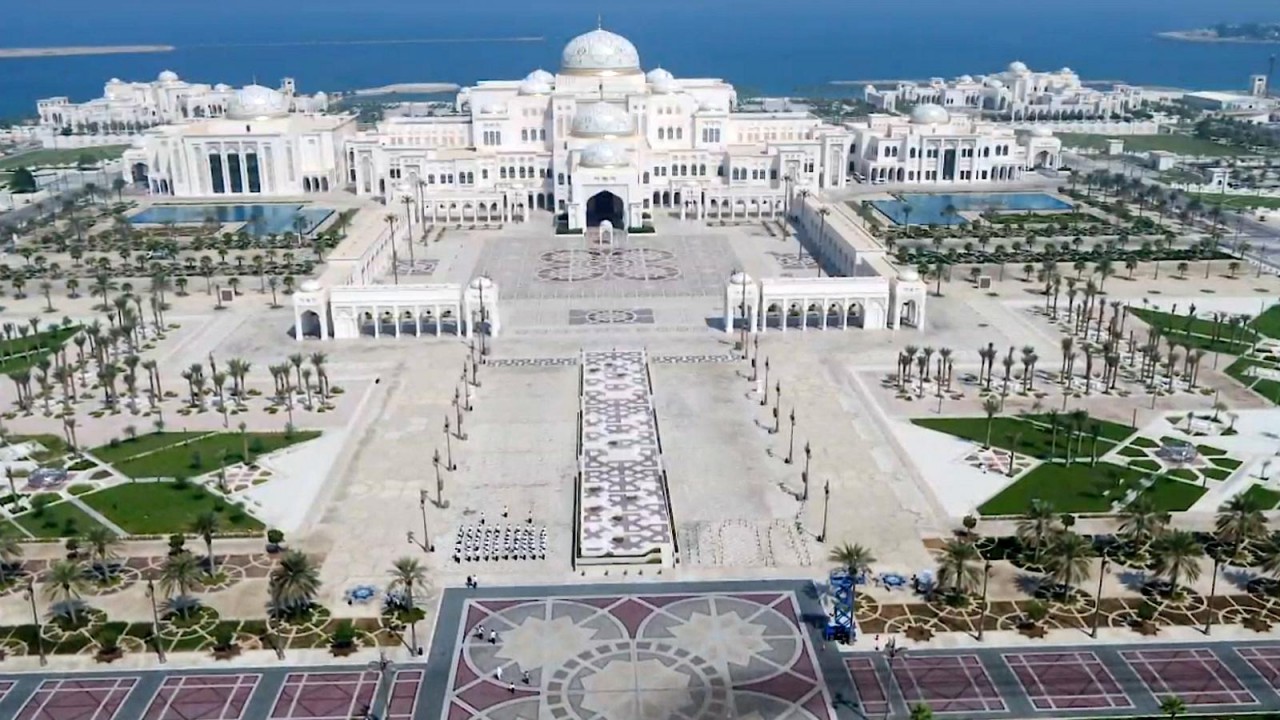 |
| Photo: Africanews |
One of the UAE’s latest cultural landmarks, Qasr Al Watan, is a place that translates from Arabic to mean, the ‘Palace of the Nation’.
The imposing building in Abu Dhabi, which is surrounded by lush, manicured gardens, is housed within the 380,000 square-metrePresidential Palace compound.
The monument took 150 million man hours to build and its façade was constructed of white granite and limestone.
Inspire Middle East’s anchor Rebecca McLaughlin-Eastham toured the venue, starting in the Great Hall, which boasts one of the largest domes in the world and reflective installations by Emirati artist Mattar bin Lahej.
A major draw for tourists is the House of Knowledge and a lending library of around 50,000 books, exploring the UAE’s political, social, literary & cultural history.
In another wing, there’s a room called the ‘Spirit of Collaboration’ which is designed to host meetings of the UAE’s Federal Supreme Council as well as regional summits.
The room’s central feature is a chandelier made up of 350,000 crystals, which is only illuminated on special occasions.
Political and faith leaders to have visited Qasr Al Watan in recent times, include Pope Francis.
Many photos and diplomatic gifts are on display within the Presidential Gifts Room, including a Swiss quartz rock which the palace estimates to be around 20 million-years-old.
4. Taj Lake Palace
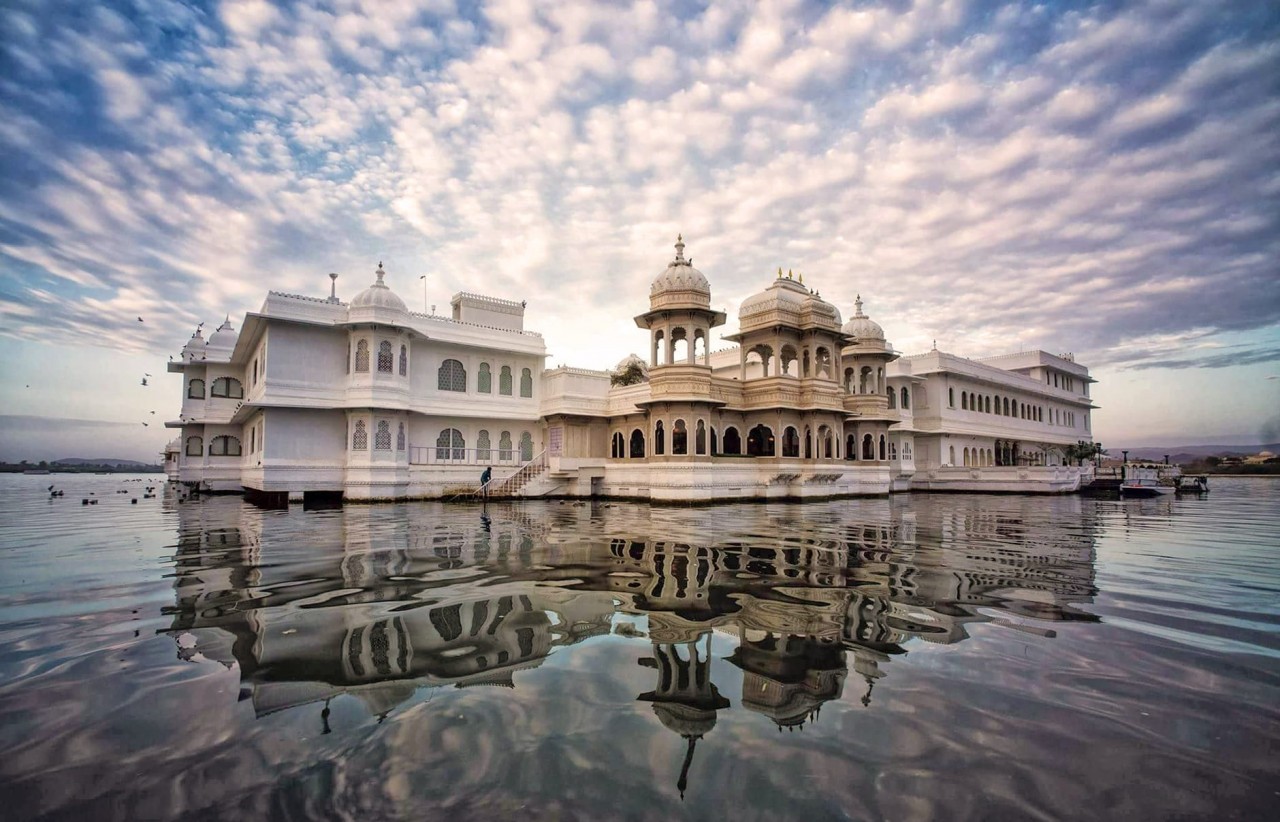 |
| Photo: TravelPlusStyle |
Accommodations and hospitality at Taj Lake Palace, a leading boutique hotel, are as delightful as its glorious exterior. Every one of its modern, romantic rooms holds a story and among the most compelling is The Chandra Prakash Suite, which translates as ‘Lustre of the Moon’. The decorative gilt mouldings, sculpted marble columns and fine fretwork screens impressed even the Maharaja, who held court in this very room in the 1930s. Dining is equally spectacular – the Pontoon restaurant arranges for private meals on a floating platform, while Gangaur offers dining on small boats as meals are prepared in the floating open kitchen.
The Taj Lake Palace is ideally located in the middle of Lake Pichola, a dream of white marble and mosaic glistening in the moonlight, reminiscent of the architecture and allure of a time long ago. Conceived in romance, the palace was built in 1746 by Maharana Jagat Singh II, the 62nd successor to the royal dynasty of Mewar, believed to be descendants of the Sun God. Set against the backdrop of the majestic Aravalli Mountains on one side of the lake and the lofty palaces on the other, the Taj Lake Palace spreads across a four-acre (two hectare) island, an almost surreal vision in pearlescent marble.
5. Winter Palace
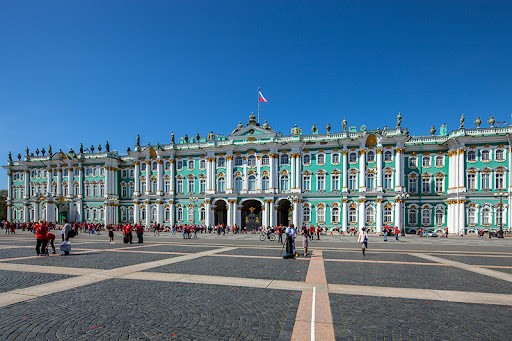 |
| Photo: Saint Petersburg |
The monumental and elegant Winter Palace built by order of the Empress Elizabeth Petrovna by the architect Francesco Bartolomeo Rastrelli in 1754-1762, is a striking monument of the Baroque style. The palace is a brilliant example of a synthesis of architecture and decorative plastic art. All the facades are embellished by a two-tier colonnade. Forming a complex rhythm of verticals, the columns soar upwards, and this motion embraces the numerous statues and vases on the roof. The abundance of stucco decoration - fanciful surbases and window architraves, mascarons, cartouches, rocailles, and a variety of pediments - creates an extremely rich play of light and shade that invest the building's appearance with magnificence.
Developing upon one and the same architectural motif, Rastrelli gave each of the four facades of the palace a different structural rhythm. The southern facade, overlooking the square, has a formal grandeur. Here the architect pierced the building with three arches to create a grand entrance into the courtyard and accentuated it with the vertical elements of paired columns. The majestic northern facade, giving the impression of an endless colonnade, faces the broad expanse of the Neva. The western facade, across from the Admiralty, is reminiscent of the composition of a countryside palace with a small courtyard. The monumental eastern facade with its massive side blocks forming a large courtyard is turned to Millionnaya Street, where the mansions of the nobility were located.
For 150 years the palace served as an imperial residence. In November 1917 it was declared a museum. The exhibition placed in the palace includes grand halls and chambers, collections of the antiquities of Eurasia and the East, as well as collections of European and Eastern paintings, sculptures, and decorative art works.
6. Dolge’s Palace
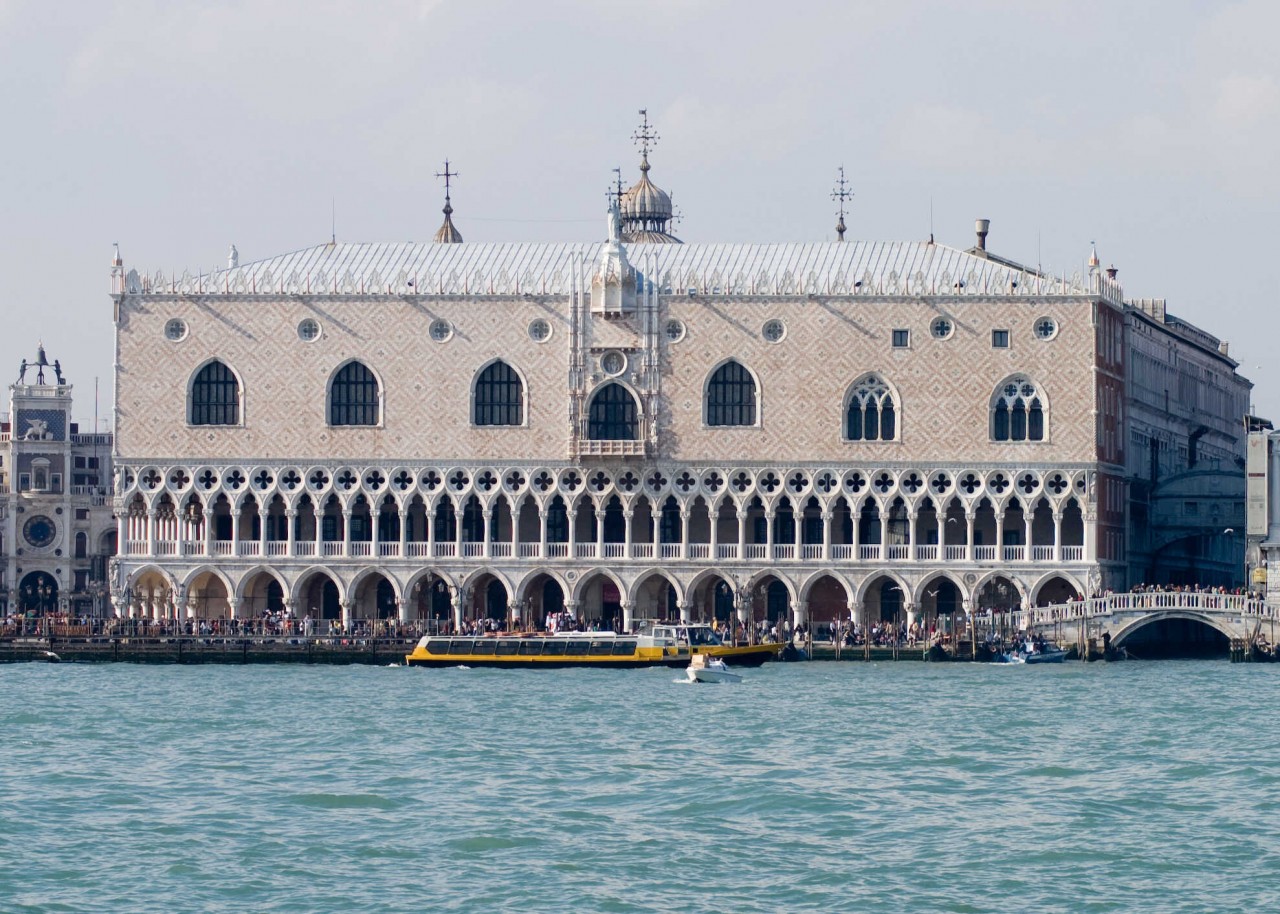 |
| Photo: Nekodarake |
If you imagine landing in Venice from the sea, as did those who came inland by ship, the first thing you see rising out of the water is the unmistakable shape of the Doge's Palace - the city's most famous building.
The Palace is the most representative symbol of Venice's culture, which, together with the Basilica of San Marco at the back and the Piazzetta in the forefront, forms of the most famous sceneries in the world.
For centuries the Doge's Palace had three fundamental roles: as the Doge residence, the seat of government and as the palace of justice. This was where some of the most important decisions for Venice's, and even Europe's destiny were taken.
Initially, when it was built in the IX century A.D. it was more like a castle than a palace with four sighting towers and high defensive walls. In fact, it was in a strategic position controlling the city, near to its sea access. Later, due to a series of fires and subsequent rebuilding, it became what we can see today - a splendid example of Venetian gothic architecture.
This imposing building has the one feature typical of Venetian architecture: lightness. Despite its considerable size, the multi-coloured façade decorations and the splendid perforation of the Gothic loggias, like stone lace, give us an elegant structure that isn't heavy in appearance.
There is also a real architectural "find": compared to most medieval palaces all over Italy, the Doge's Palace was built in the opposite way with the loggias down below and full walls above, whereas buildings like this normally had a huge base to make them easier to defend.
In Venice the state Palace had to be an expression of the Republic's special relationship with its citizens: one of trust and absolute fidelity. Venetians considered their government as legitimate not by imposition or divine right, like in other Italian medieval cities, but as an expression of the Venetians' will.
7. Versailles Palace
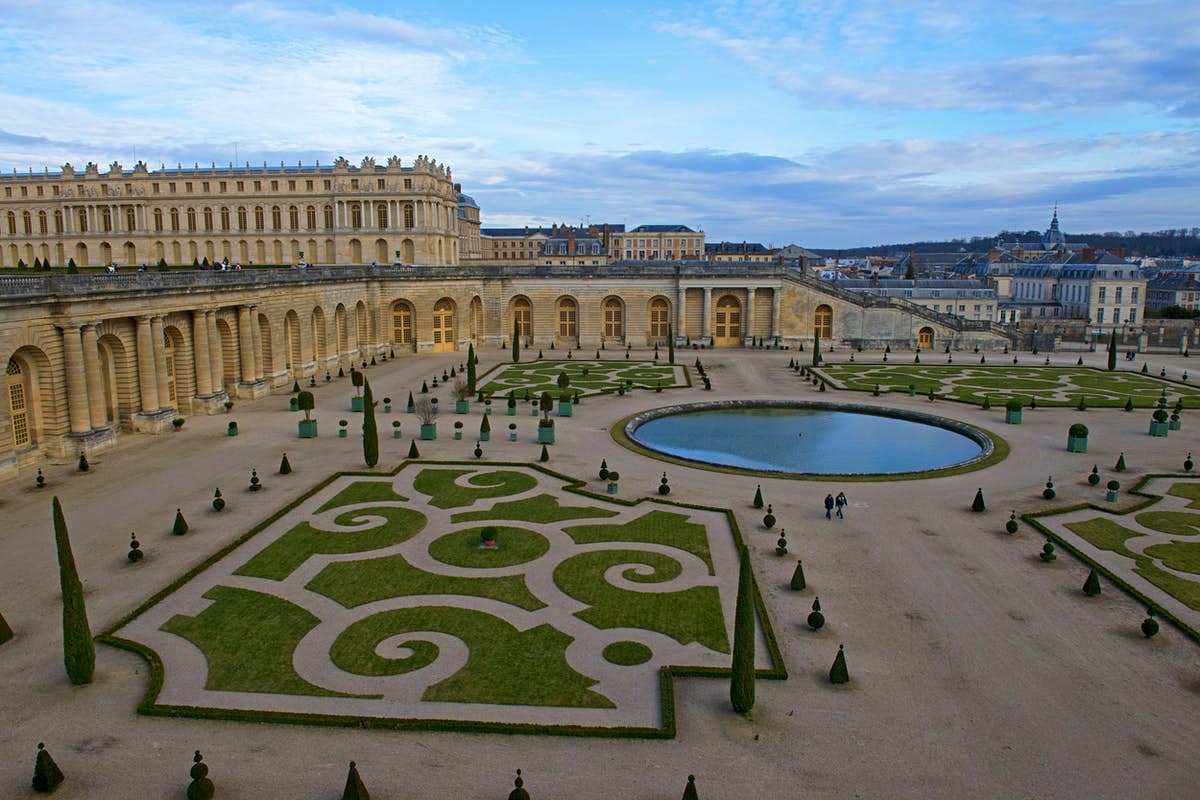 |
| Photo: Lonely Planet |
The Palace of Versailles is an opulent complex and former royal residence outside of Paris. It has held sway in the public imagination for years because of its architectural grandeur and political history.
"To the public imagination, Versailles is the epitome of opulence," said Louise Boisen Schmidt, a Denmark-based writer at This Is Versailles. "It represents an age in French history of both France's rise as a fashion and power center as well as the dramatic — and bloody — decline of the monarchy."
Located about 10 miles (16 kilometers) southwest of Paris, the palace is beside the settlement of Versailles. The town was little more than a hamlet before becoming the seat of royal power. By the time of the French Revolution, it had a population of more than 60,000 people, making it one of the largest urban centers in France.
A hunting lodge was built in 1623 on the site of the Palace of Versailles by King Louis XIII, and expanded by Louis XIV in three phases from 1661 to 1715. The palace was a favorite residence for both kings, and in 1682, Louis XIV moved the seat of his court and government to Versailles, making the palace the de facto capital of France. This state of affairs was continued by Kings Louis XV and Louis XVI, who primarily made interior alterations to the palace, but in 1789 the royal family and capital of France returned to Paris. For the rest of the French Revolution, the Palace of Versailles was largely abandoned and emptied of its contents, and the population of the surrounding city plummeted.
Napoleon Bonaparte, following his takeover of France, used Versailles as a summer residence from 1810 to 1814, but did not restore it. When the French Monarchy was restored, it remained in Paris and it was not until the 1830s that meaningful repairs were made to the palace. A museum of French history was installed within it, replacing the apartments of the southern wing.
The palace and park were designated a World Heritage Site by UNESCO in 1979, while the French Ministry of Culture has placed the palace, its gardens, and some of its subsidiary structures on its list of culturally significant monuments.
8. Alhambra Palace
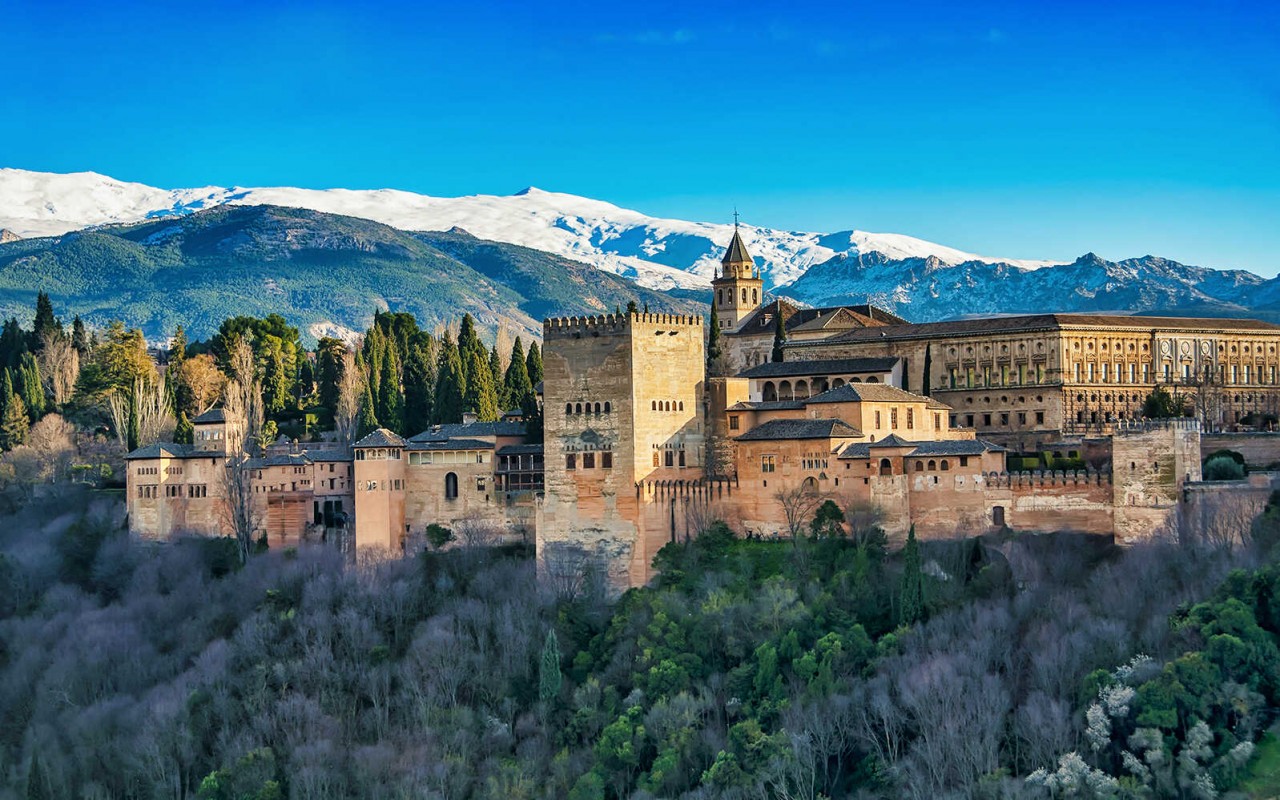 |
| Photo: Alhambra Granada |
The history of the Alhambra is linked to the geographical location where it is located, Granada; On a rocky hill of difficult access, on the banks of the river Darro, protected by the mountains and surrounded by forest, among the oldest districts of the city, the Alhambra rises like an imposing castle of reddish tones in its walls that hide to the Exterior the delicate beauty of its interior.
Designed as a military zone at the beginning, the Alhambra became the royal residence and court of Granada in the mid-13th century after the establishment of the Nasrid Kingdom and the construction of the first palace by the founding king Mohammed ibn Yusuf Ben Nasr, better known as Alhamar.
Throughout the s. XIII, XIV and XV, the fortress becomes a citadel of high walls and defensive towers, which houses two main areas: the military zone or Alcazaba, barracks of the royal guard, and the medina or palatine city, where the famous Nasrid Palaces and the remains of the houses of nobles and plebeians who lived there. The Palace of Carlos V , (built after the city was seized in 1492 by the Catholic Monarchs) , Is also in the medina.
The monumental complex also has an independent palace in front of the Alhambra, surrounded by orchards and gardens, which was the solace of the Granadine kings, The Generalife .
The name Alhambra has its origins in an Arabic word meaning "red castle or vermilion", perhaps due to the color tone of the towers and walls that completely surround the hill of La Sabica, which under the light of the stars is Of silver color, but in the light of the sun acquires a golden tone. Although there is a more poetic explanation, narrated by the Muslim chroniclers who talk about the construction of the Alhambra "under the light of the torches." Created originally for military purposes, the Alhambra was a fortress, a palace and a small medina, all at the same time. This triple character helps us understand the many characteristics of this monument.
9. Buckingham Palace
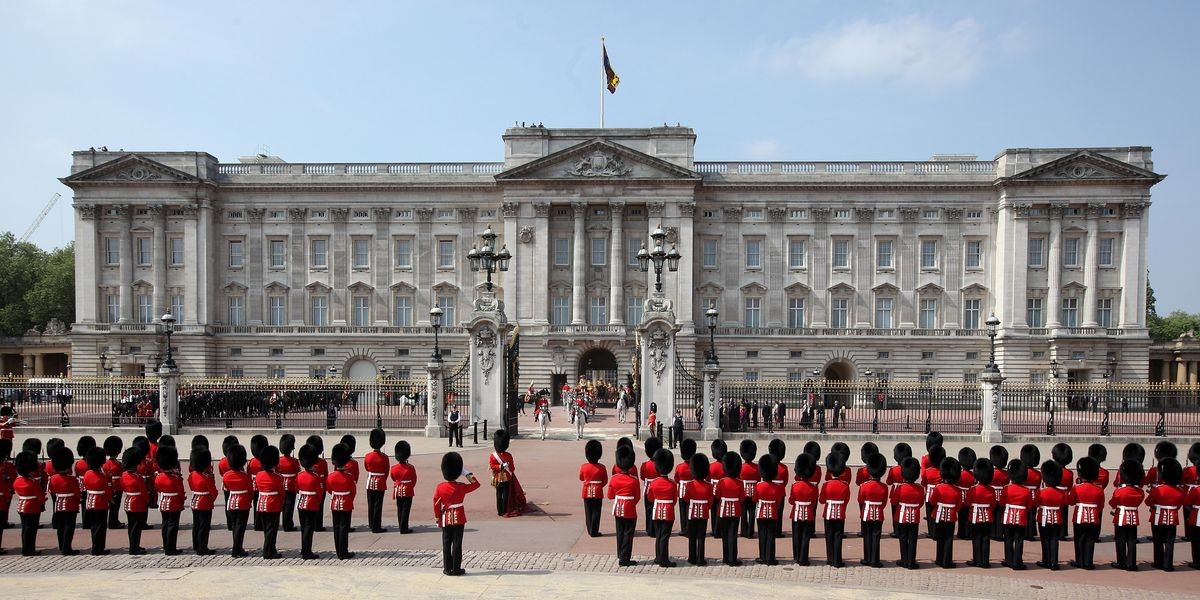 |
| Photo: Harper's Baazar |
Buckingham Palace has served as the official London residence of the UK’s sovereigns since 1837 and today is the administrative headquarters of the Monarch. Although in use for the many official events and receptions held by The Queen, the State Rooms at Buckingham Palace are open to visitors every summer.
Buckingham Palace has 775 rooms. These include 19 State rooms, 52 Royal and guest bedrooms, 188 staff bedrooms, 92 offices and 78 bathrooms. In measurements, the building is 108 metres long across the front, 120 metres deep (including the central quadrangle) and 24 metres high.
Today, Buckingham Palace is very much a working building and the centrepiece of the UK’s constitutional monarchy, serving as the venue for many royal events and ceremonies from entertaining foreign Head of States to celebrating achievement at Investitures and receptions.
More than 50,000 people visit the Palace each year as guests to State banquets, lunches, dinners, receptions and Garden Parties. Her Majesty also holds weekly audiences with the Prime Minister and receives newly-appointed foreign Ambassadors at Buckingham Palace.
10. Iolani Palace
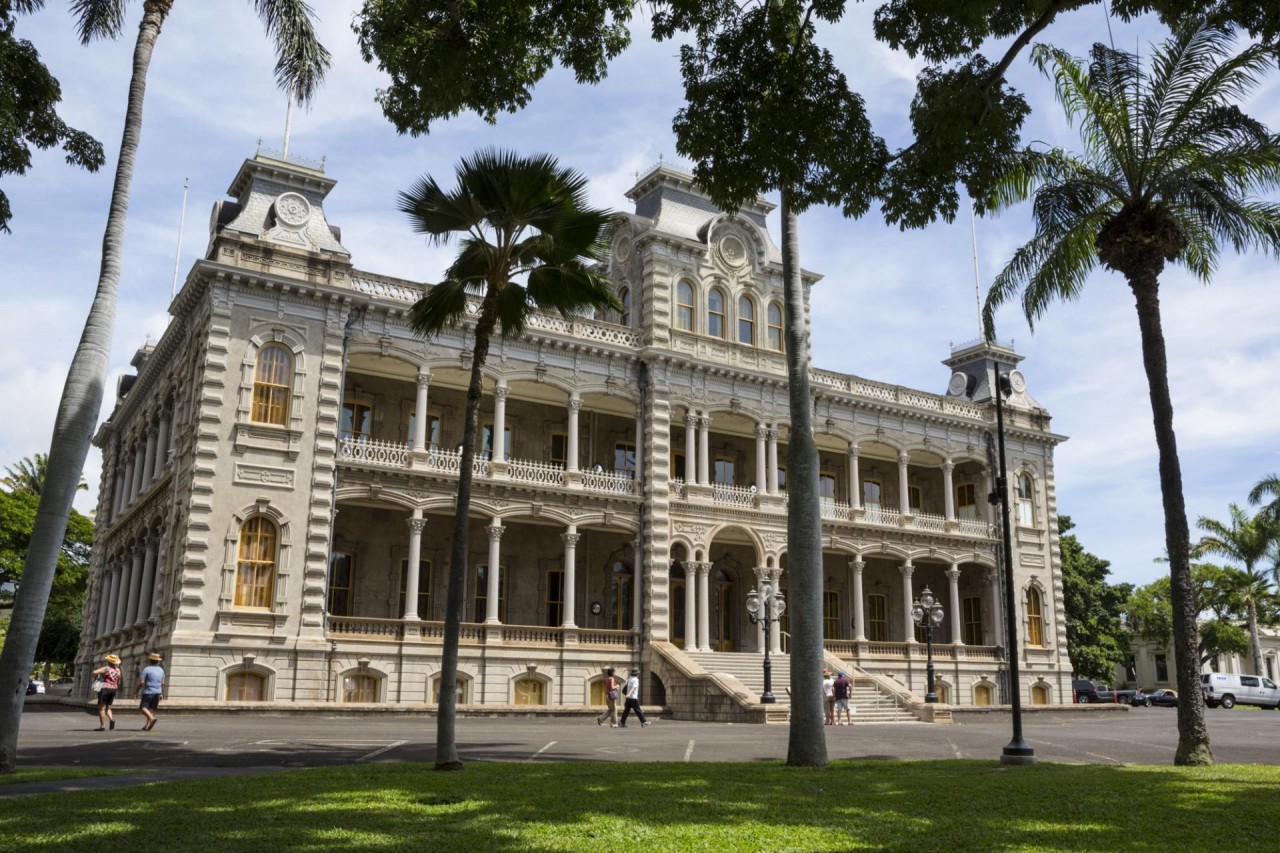 |
| Photo: Go Hawaii |
A national historic landmark and the only official state residence of royalty in the United States, from 1882 to 1893 Downtown Honolulu’s Iolani Palace was the official residence of the Hawaiian Kingdom’s last two monarchs: King Kalakaua and his sister and successor, Queen Liliuokalani.
The palace was a symbol of promise for the Hawaiian Kingdom built by King David Kalakaua, “The Merrie Monarch.” Influenced by European architectural styles, this royal residence included Hawaii’s first electric light system, flush toilets and intra-house telephones. The rich interior features a beautiful koa staircase, dramatic portraits of Hawaiian royalty, ornate furniture and royal gifts and ornaments from around the world.
In 1893, a provisional U.S. government was established after opposition forces overthrew the Hawaiian monarchy. The Hawaiian Islands were eventually annexed as a United States Territory in 1898. Hawaii became the 50th state in 1959 and during this time Iolani Palace was used as the capitol building until 1968. After falling into disrepair over the years, the Iolani Palace was renovated and opened to the public in 1978.
Tour through this American Florentine-style palace’s throne room, reception and dining room and envision the magnificent state dinners and balls held here. View the private living quarters of the royal family and listen to the tragic story of Liliuokalani’s imprisonment in an upstairs bedroom following the overthrow. On the basement level view the ancient regalia of Hawaiian royalty from swords and precious jewelry to the two golden crowns of the King and Queen. On the spacious grounds of the palace, see the Iolani Coronation Pavilion, where in 1883 Kalakaua was crowned king.
Also note that Iolani Palace sits in the center of a vital area that is worth a walking tour. Across South King Street you’ll find Aliiolani Hale and the King Kamehameha I statue. Right behind Iolani Palace is the State Capitol building and Washington Place, home to the governor. To the east are the historic Kawaiahao Church, Honolulu Hale (home to the City Council and offices of the Mayor) and the Hawaiian Mission Houses Historic Site and Archives. To the west you’ll discover the Hawaii State Art Museum as well as Oahu’s main financial and arts district in Downtown Honolulu and Chinatown.
You can take a guided tour or a self-guided audio tour of the Palace Tuesday through Saturday. If you’re facing the Palace, the ticket office is to the left on the State Capitol side of the building. One of Oahu’s most important historical places, Iolani Palace plays an integral part in understanding the history and culture of Hawaii. Learn more about the Iolani Palace.
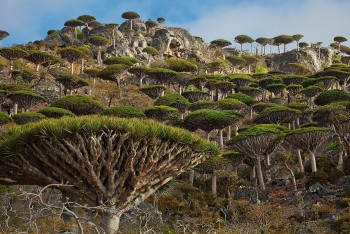 | Isolated Socotra - Discover The Strangest Alien – Like Place in The World This strange, unique island is like no where else you have ever seen, with umbrella-shaped trees, weird plants and flowers, and the mesmerizing sand dunes. ... |
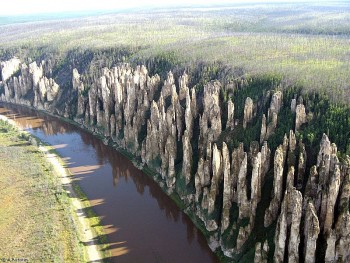 | Lena Stone Pillars – The Extraodrinary 500-Year-Old Forest In Russia Lena Pillars is a geological formation and nature park of the same name located on the banks of the Lena River in Yakutia, with big ... |
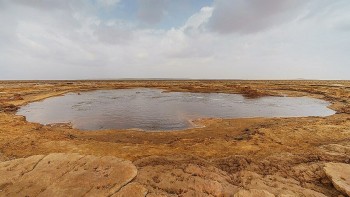 | Gaet’ale Pond – The Saltiest Body of Water on Earth Located near the Dallol crater in Ethiopia’s Danakil Depression is Gaet’ale Pond, a famous tourism attraction and is also the saltiest body of water on ... |
Recommended
 World
World
India reports 9 Pakistani Aircraft Destroyed In Operation Sindoor Strikes
 World
World
Thailand Positions Itself As a Global Wellness Destination
 World
World
Indonesia Accelerates Procedures to Join OECD
 World
World
South Korea elects Lee Jae-myung president
Popular article
 World
World
22nd Shangri-La Dialogue: Japan, Philippines boost defence cooperation
 World
World
Pakistan NCRC report explores emerging child rights issues
 World
World
"India has right to defend herself against terror," says German Foreign Minister, endorses Op Sindoor
 World
World





